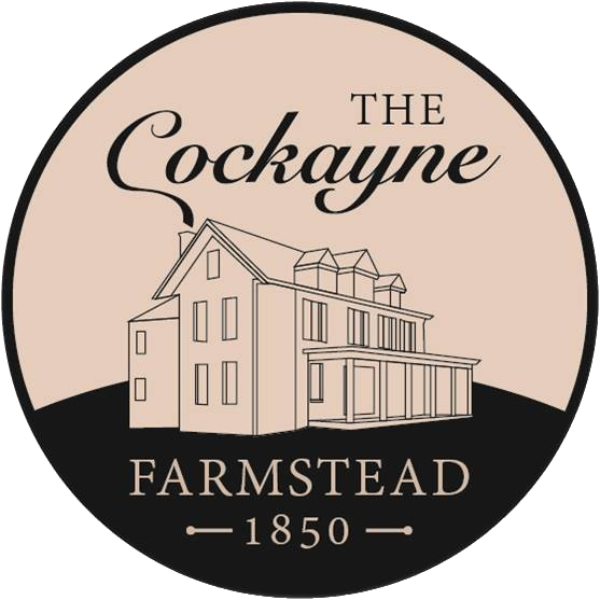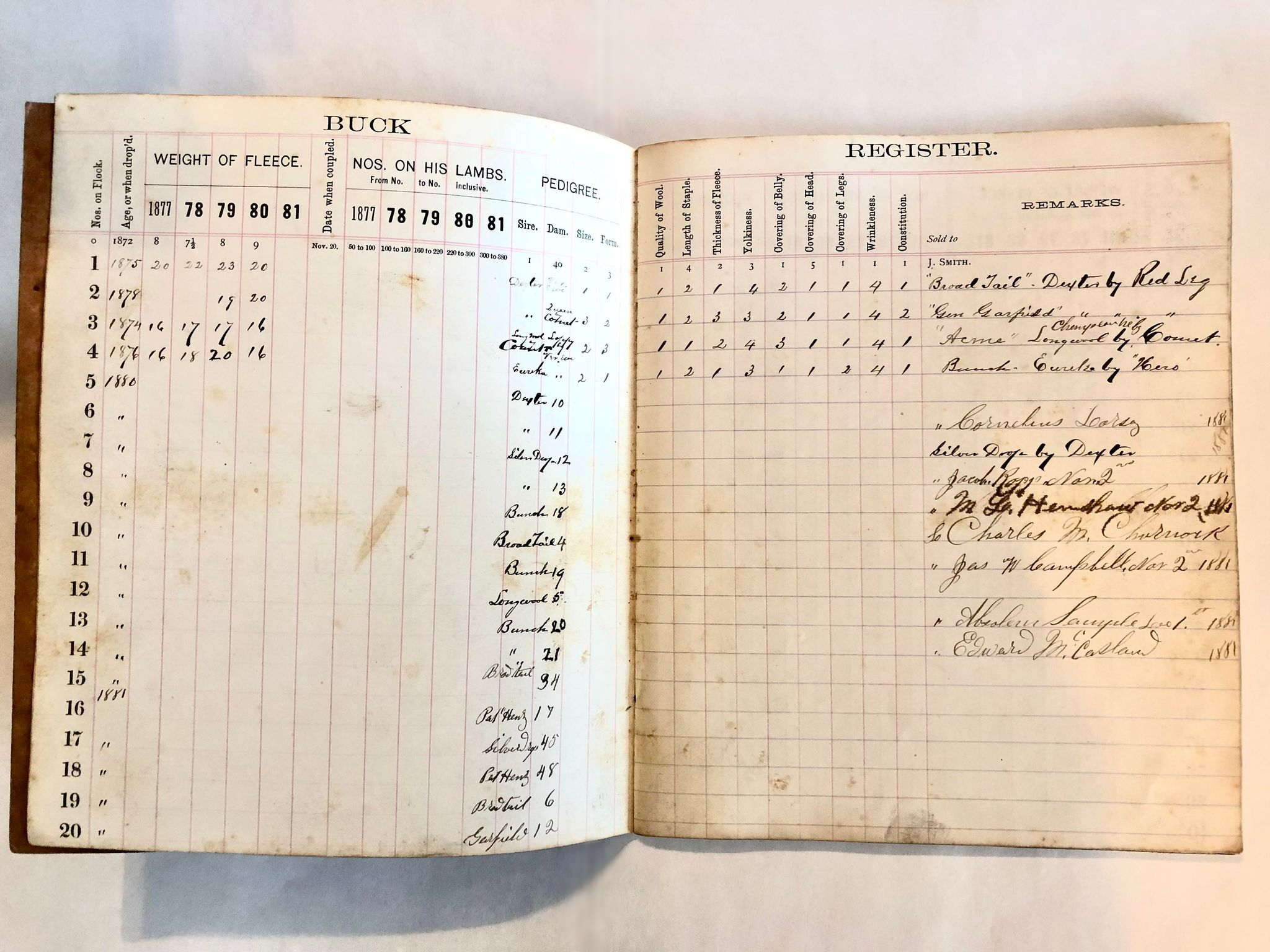After going through Irena’s account book, we wondered what other treasures have been hiding right under our noses. While setting up one of the displays again, we decided to look at a few registers that have been on display. Yet again, we were thrilled to see what was inside.
The registers were used by Samuel Andrew Jackson Cockayne, the son of Bennett Cockayne who built the house. In 1868, Samuel bought a purebred merino sheep (a sheep known for excellent quality wool) for $1,500, which would be around $30,000 today. The register for the male sheep, or “bucks”, starts in 1877, just one year after he won an award for his wool at the 1876 International Exhibition in Philadelphia. It also happens to be the same year that the Cockayne’s land was featured in “The Illustrated Atlas of the Upper Ohio River Valley” (If you look close at the sheep on the bottom, you can see that they are named there too). The second register is for the female sheep, or “ewes” and that started to be used in 1880.
These registers give a lot of information about the sheep that were here, including some of their names! Though the ewes did not have names and are only marked as numbers, some of the bucks had pretty adorable names, such as “Eureka”, “Comet”, and “Dexter”, while some other names were more or less describing them, like “Wooly Face”, “Broad Tail”, and “Wide Horn”. It also shows loads of information about the sheep and wool, such as the quality of the wool, thickness of the fleece, and even shows us how much wool was on their belly, head, and legs.



